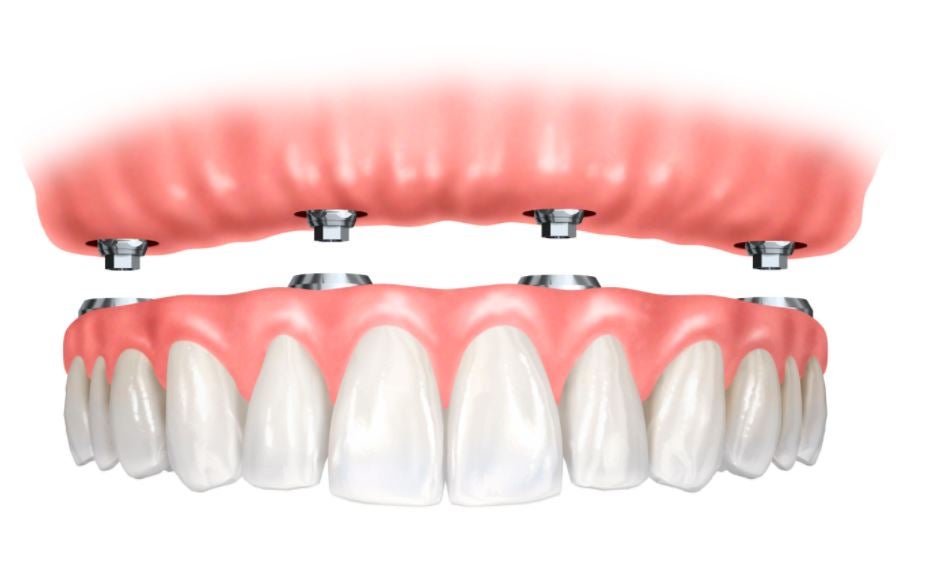The Ultimate Guide To Dental Sense
The Ultimate Guide To Dental Sense
Blog Article
More About Dental Sense
Table of ContentsThe Greatest Guide To Dental SenseAll About Dental SenseGetting The Dental Sense To Work7 Simple Techniques For Dental Sense
are clinical tools surgically dental implanted right into the jaw to restore an individual's capacity to chew or their appearance. They provide assistance for artificial (fake) teeth, such as crowns, bridges, or dentures. When a tooth is shed because of injury or disease, an individual can experience complications such as quick bone loss, defective speech, or changes to eating patterns that result in pain.Oral implant systems contain an oral implant body and oral implant joint and may additionally consist of an abutment addiction screw. Front tooth filling. The dental implant body is surgically placed in the jawbone in location of the tooth's root. The oral implant abutment is normally connected to the dental implant body by the joint addiction screw and prolongs with periodontals right into the mouth to sustain the connected fabricated teeth
(https://www.callupcontact.com/b/businessprofile/Dental_Sense/9469240)Framework of The Dental Implant System choosing oral implants, talk with your dental company concerning the potential benefits and threats, and whether you are a prospect for the procedure. Things to consider: Your general health is a vital consider figuring out whether you are a good candidate for dental implants, for how long it will certainly require to heal, and the length of time the implant may remain in place.
Cigarette smoking may influence the recovery procedure and reduce the long-term success of the dental implant. The recovery procedure for the dental implant body might take numerous months or longer, throughout which time you normally have a temporary abutment instead of the tooth. the dental implant procedure: Very carefully comply with the oral health guidelines offered to you by your oral company.
The Ultimate Guide To Dental Sense
Implant failure can result in the need for another operation to deal with or replace the implant system. Restores the capacity to eat Recovers aesthetic look Assists maintain the jawbone from shrinking as a result of bone loss Protects the health and wellness of the surrounding bone and gums Assists keep surrounding (close-by) teeth stable Enhances lifestyle Damage to surrounding all-natural teeth throughout dental implant placement Injury to the surrounding tissues during surgical procedure, such as sinus opening Injury during surgery (for instance, crack of surrounding jawbone) Inadequate function, such as feeling like the teeth do not bite together generally A sensation that the tooth is loose or twisting in position resulting from a joint screw loosening up Implant body failure (looseness of the dental implant body) as a result of systemic infection, which may be much more most likely in patients with unrestrained diabetes mellitus because of regional infection in bone and gums sustaining the dental implant body due to delayed recovery, which may be more probable in people who smoke Problem cleaning up the gum tissues around the dental implant, leading to inadequate dental health Without treatment gum disease Post-surgical feeling numb as a result of nerve impingement or damages Constantly alert healthcare carriers and imaging technicians that you have dental implants before any type of magnetic resonance imaging (MRI) or x-ray treatments.
FDA is not knowledgeable about any kind of unfavorable occasions reported for MRI or x-ray treatments with dental implants. Dental implants systems are generally made from materials that comply with global agreement criteria of the International Organization for Standardization (ISO) or ASTM International. These requirements have information of what makes a secure material.

A dental implant is a framework that replaces a missing tooth. With screw-like tools, the doctor inserts a dental implant right into the jawbone, and it serves as a support for a synthetic tooth, called a crown. A gadget called a joint connects the fabricated tooth to the oral implant. The crown is custom-made to fit the person's mouth and match the shade of their teeth.
Dental Sense Things To Know Before You Get This
Some people are not qualified for dental implant surgery. It is for oral doctors to operate people with: intense illnessuncontrollable metabolic diseasebone or soft cells condition or infectionIf these issues are fixed, an individual can have the surgical treatment. In, oral doctors abstain from operating people with: If individuals with any of the above undergo oral implant surgery, there is a greater threat of the dental implant stopping working.

Oral dental implant surgical treatment is an individualized procedure. It's not the very same for everybody. However the following offers a general review of what you can expect your dentist, dental doctor, periodontist or prosthodontist to do: Position the implant surgically. Give you time to recover. Attach the article and final crown, bridge or denture.
Next, your specialist will thoroughly put the oral implant right into your jaw. If your dental implant is near the front of your mouth, your dental expert will make a temporary tooth for you to put on till you recover.
Getting The Dental Sense To Work
Your supplier can tell you what to expect in your circumstance. Throughout the recovery phase, your jawbone should fuse to the oral implant. This procedure, called osseointegration, is essential for stability and long-term success. This procedure can take anywhere from 3 to 9 months. In some instances, it may take longer.
As soon as your implant heals, your dentist can attach the joint (little connector message) and your final reconstruction (crown, bridge or denture). This normally takes regarding one hour to finish and might require a 2nd small surgery. You should not feel any pain during your dental implant treatment because your service provider will certainly make use of medicine to numb your periodontals.
Report this page